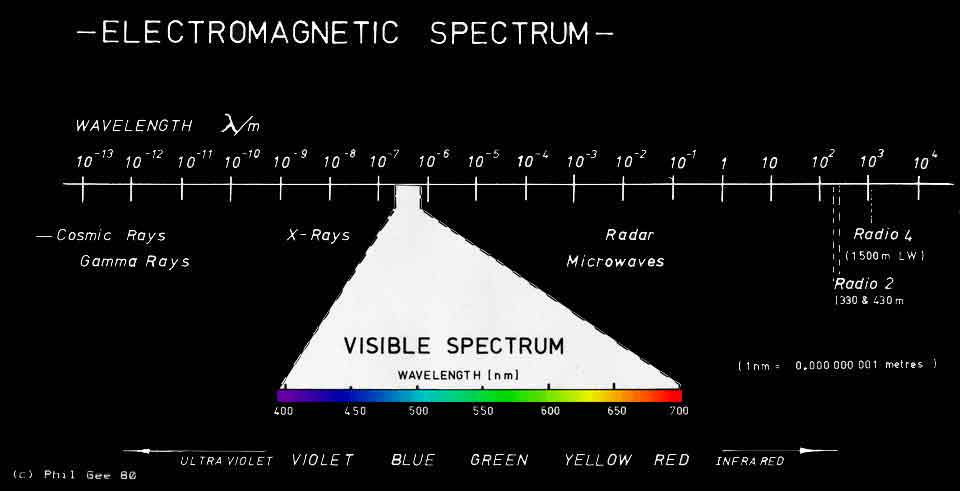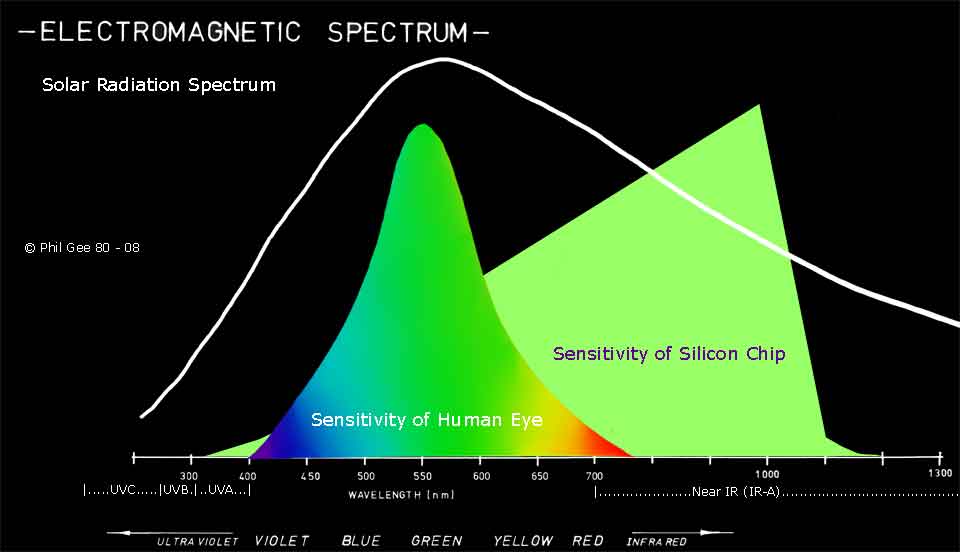Electromagnetic Spectrum

Sensitivity of Eye and Silicon Chip.

Fortunately much of the solar radiation is absorbed (Filtered) by the various molecules in our atmosphere 03, H2O CO3 a significant amount reaches sea level
Whilst convention photography is concerned with the visible range, imaging science uses the IR and UV as well as the more Radiographic particles to 'see' and record information.
Working with the Near IR and UV does not require expensive equipment and finds wide application in scientific, medical and Forensic imaging.
You can see from the graph that the sensitivity of the silicon chips used in modern digital cameras have a wider range of sensitivity than the human eye, these frequencies are filtered out by the use of filter slips over the chip as well aa anti alaising filters to reduce Moire´ fringes that can occur when the subject has a repetitive pattern close to the pattern of the chip sensors.
By removing these filters we can extend our image making range of frequencies using a 'standard' digital camera to record in the UV and IR ranges unfortunately this will invalidate your manufacturers warranty and is best carried out by a specialist unless you want to end up with a rather expensive paperweight.
Infra Red extending in to the mm range (IR-A: 700nm - 1400nm; IR-B: 1400nm - 3000 nm; IR-C 3000 nm - 1mm)
finds common application from the IR channel selection devices to fiber optic telecommunications at the longer wavelengths we are familiar with heat radiation effect.
Ultra Violet: UVA 400 nm - 315 nm; UVB 315nm - 280 nm; UVC: 280 nm - 100 nm; and down to 10nm under vacuum conditions UV's carcinogenic and germicidal (water purification) properties have been well documented and extreme care must be taken when working with these wavelengths.